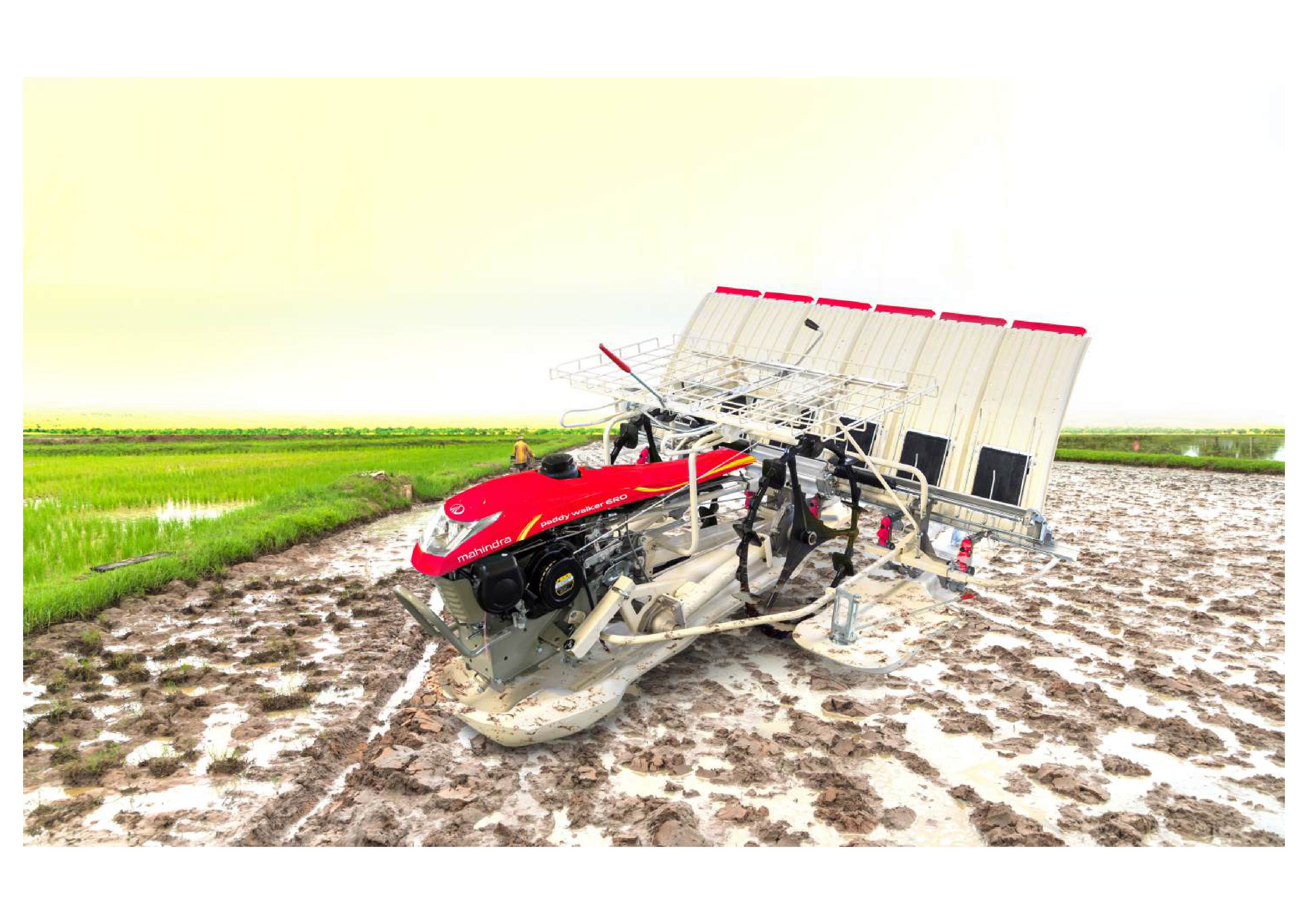Quick Support
Sales
- +91 8888200022 / +91 7744911119
Service
- +91 8888044448
Email
- [email protected]

Rice cultivation has been a cornerstone of agriculture worldwide, particularly in the heart of Asia. However, the traditional methods of rice transplanting have long been associated with challenges such as labour intensity, time consumption, and overall difficulty. The emergence of mechanised solutions, exemplified by innovations has brought about a significant transformation in this age-old process. This blog aims to delve deeper into the profound impact of these technological advancements on rural employment and skill development.
The challenges in paddy planters are few, if only one can learn how to tackle them! The labour-intensive nature of traditional rice transplanting has posed significant challenges for farmers over the years. Manual transplanting requires extensive hours in the field and meticulous labour management, often leading to complications such as labour shortages. These shortages result in delayed transplanting, causing overgrown nurseries and
heightened anxiety among farmers.
The timing of transplanting is crucial for a healthy crop, and manual transplanting introduces human error and variation. This process typically takes 5-6 hours per acre, costing lesser around per acre. The lack of uniformity in row distances in manual transplanting makes it more prone to diseases and complicates deweeding efforts.
Mechanising the transplanting process has emerged as a revolutionary solution to these challenges. Machines like the Mahindra Walk Behind Rice Transplanter have significantly reduced the physical workload, with the bulk of labour now focused on loading saplings. This shift has not only improved efficiency but has also introduced a level of precision previously unattainable with manual methods.
A detailed comparison between manual and mechanised transplanting underscores the numerous benefits of the latter. The Mahindra MP461 Walk Behind Rice Transplanter Mahindra PLANTING MASTER 4RO Ride on models allow for:
Seedlings aged 2-3 weeks (more resilient and quick to develop root systems).
Uniform depth and spacing, ensuring better crop health.
Reduced transplanting time (about 2 hours/acre).
Lower cost
Increased crop productivity (5-10% increase per acre).
Lower disease prevalence.
Easier deweeding due to uniform row distances.
Land and Nursery Preparation
Effective mechanised transplanting requires specific preparations, such as shallow puddling with power tillers and ensuring settled soil. The Mahindra models facilitate both mat type and tray type nursery preparations, adapting to diverse field conditions.
An in-depth overview of transplanters reveals a host of features designed to cater to different farm sizes and needs. With options like MP461 & PLANTING MASTER 4RO, Ride On and Walk Behind, these machines are user-friendly, featuring convenient lever locations and hydraulic functions for easy transport. The settings for various paddling depths accommodate different field conditions.
Coverage of 2.5 to 4.0 acres per day.
High fuel efficiency (2-2.5 litres per acre).
Lightweight design (180 kg for MP461) for easy manoeuvrability.
Technical specifications include a 4.5 hp air-cooled petrol engine and electric start, ensuring reliability and ease of use.
The Rice transplanter machine not only enhances farming efficiency but also opens avenues for additional income through rental business opportunities. The technical prowess of these machines, including their four-wheel drive and adjustable planting units, ensures precision and adaptability in various farming scenarios.
The introduction of mechanised transplanters like the Mahindra models significantly impacts rural employment and skill development. While it reduces the demand for manual labour, it simultaneously creates new opportunities for skilled machine operators and technicians. This shift necessitates new training programs and skill development initiatives, fostering a more technically skilled workforce in rural areas.
The transition from manual to mechanised transplanting requires a shift in the skill set of the rural workforce. Training programs focusing on machine operation, maintenance, and troubleshooting become crucial. This upskilling opens up new employment opportunities in machine operation, service, and maintenance sectors, contributing to rural economic development.
Mechanised transplanting contributes to sustainable agriculture by increasing efficiency, reducing costs, and improving crop health. This efficiency leads to higher yields and potentially increased income for farmers. The reduced physical strain on labourers also contributes to better health and quality of life in farming communities.
In conclusion, the Mahindra Rice planter, particularly the MP461 & PLANTING MASTER 4RO models, stand as a beacon of progress in the realm of agricultural technology. Their introduction signifies a transformative leap forward in addressing the inherent challenges of traditional paddy transplanting. By providing efficient,
cost-effective, and significantly less labour-intensive solutions, these technological marvels are reshaping the landscape of rice cultivation.
Beyond merely streamlining the agricultural process, this technological shift has far- reaching implications. It goes beyond the fields, impacting the very fabric of rural communities. The Mahindra Rice planting machines are not just tools; they are agents of change in rural employment dynamics. As these machines minimise the demand for manual labour, they simultaneously create a demand for a new skill set. This shift in employment requirements is a call to action for the rural workforce to embrace technological proficiency, opening avenues for specialisation in machine operation, maintenance, and troubleshooting.
Moreover, the Mahindra Rice Transplanter plays a pivotal role in paving the way for a more sustainable and prosperous agricultural future. Their ability to enhance productivity and streamline processes contributes to the economic viability of farming. By reducing costs and improving crop health, these machines become catalysts for sustainable agriculture. The ripple effect of this efficiency is felt in increased yields, potentially translating into higher income for farmers.
In essence, the journey of the Mahindra Rice Transplanters represents a convergence of technological prowess, economic empowerment, and community well-being. It is a testament to the fact that innovation, when thoughtfully integrated into age-old practices, has the power to revolutionise not only how we cultivate our
fields but also how we nurture and sustain our rural communities. As we witness the unfolding chapters of this technological saga, one can’t help but be optimistic about the prospect of a more resilient, sustainable, and prosperous future for agriculture and those who depend on it.